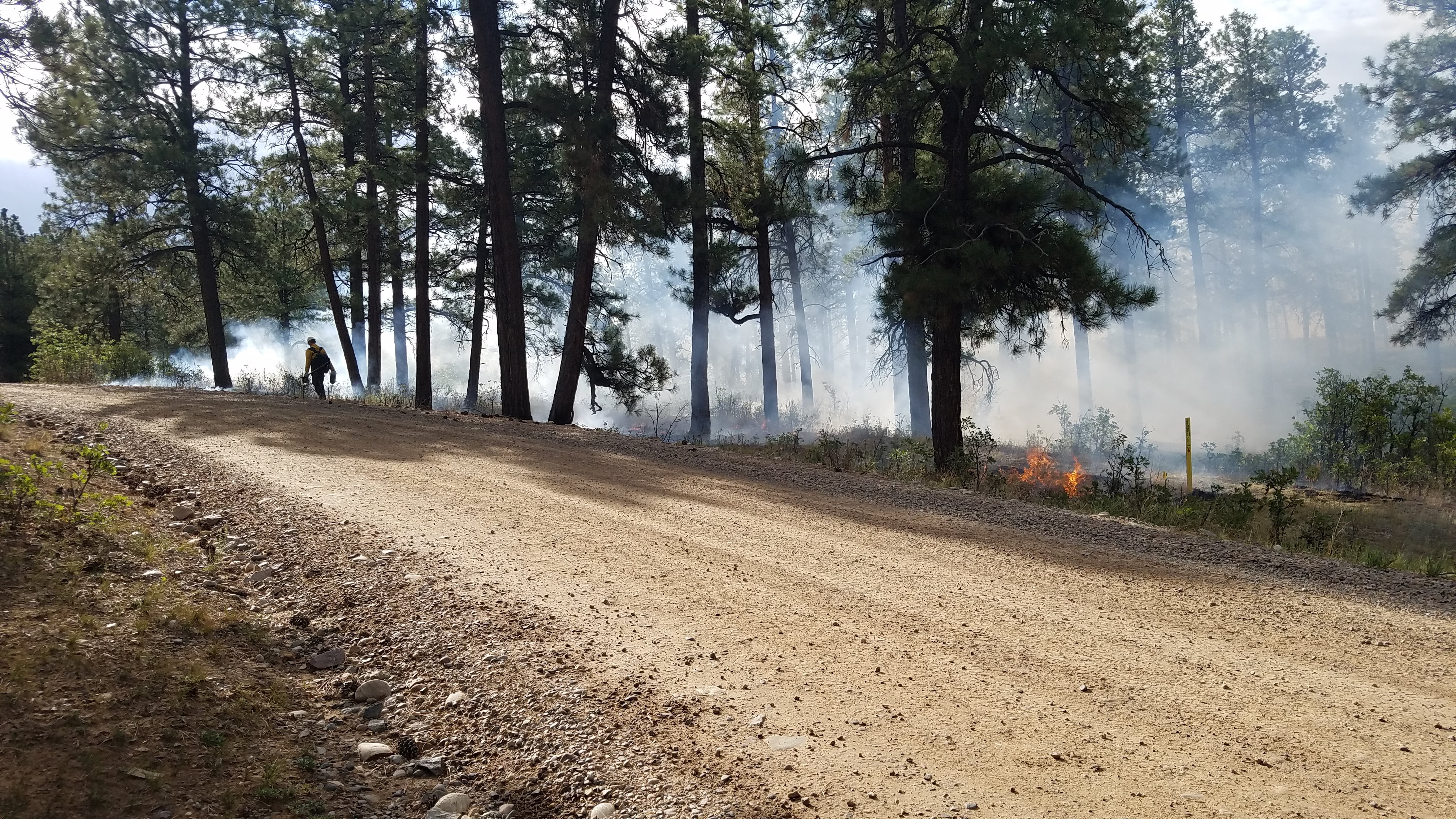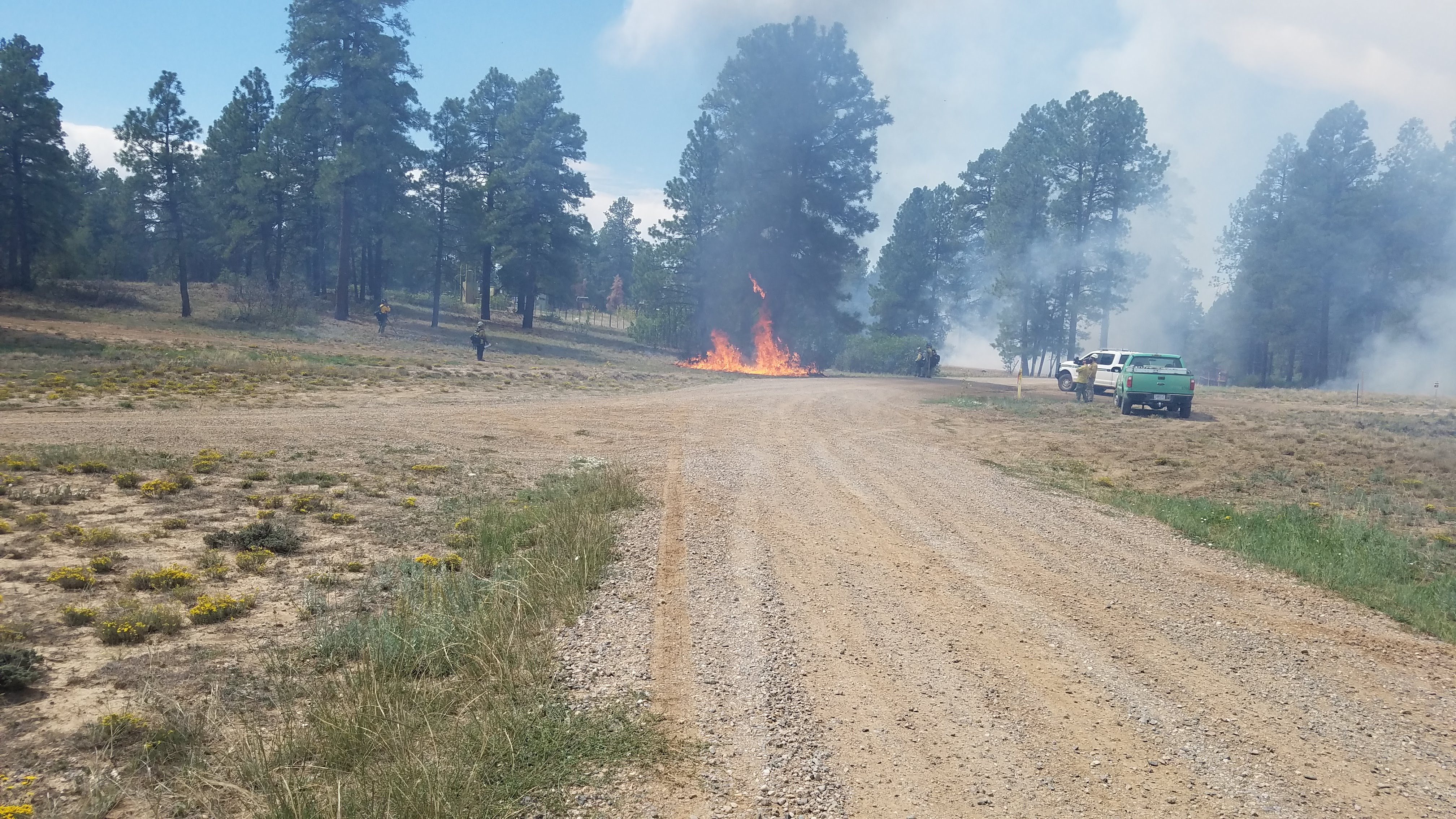While communities both locally and nationally were impacted by large wildfires this year, fire fighters and land managers of the 2-3-2 region kept up fuel mitigation work once conditions improved in September. After working and planning all summer, local managers finally had the resources and conditions necessary to continue important work on prescribed burning in the area. They began burning Saturday, September 8 and continued to work for about two weeks on 6,000 acres in the Saul’s Creek and Yellow Jacket area 4-12 miles east of Bayfield off US 160.
Unlike usual prescribed burns, this project was a “cooperative burn” and included firefighters and resources from the National Forest Service, Bureau of Land Management, Colorado Department of Fire Prevention and Control, Colorado Parks and Wildlife, Durango Fire and Rescue, National Center for Atmospheric Research, Michigan State University, Southwest Conservation Corps, The Nature Conservancy, Forest Stewards Guild, Mountain Studies Institute and Upper Pine River Fire Protection District.
A Prescribed Fire Training Exchange (TREX) was originally planned for the fall by 2-3-2 partners, but when taxed resources and low enrollment caused a postponement to next year, the San Juan TREX partnership decided to continue to work together to assist with local prescribed burn objectives.
The cooperative burn approach, while different from the TREX model, still provided learning opportunities and practice for local partners while focusing on completing priority burn units. Combining resources to complete burn units together strengthens local partnerships and the ability to achieve mutual and individual fire management goals. While this project targeted National Forest land, cooperative management could also be applied to state or private lands.
After 100 years of suppressing forest fires, land managers have a lot of work to do to restore our forests to healthier and more resilient conditions. Since fire is a natural cycle in a forest ecosystem, managers use prescribed fires to restore fire cycles in controlled conditions. Fire is essential in increasing habitat diversity and removing overstocked fuels (shrubs, trees, and pine needles) that could burn hot and quick during an unplanned wildfire. In addition to keeping communities safer, thinner forests are also less prone to impacts from drought, beetles and disease.
Despite hot and dry summers and longer wildfire seasons, the Forest Service can use meteorology, fire science, and thorough planning to find times to burn safely and minimize smoke. Managers burn during favorable windows when conditions include high fuel moisture, higher humidity, and low to moderate winds. Fire teams are skilled at adapting quickly, and when conditions shift or smoke becomes too thick in nearby communities, they adjust thorough burn plans appropriately.
Article announcing burn in the Durango Herald:
https://durangoherald.com/articles/239545-prescribed-burns-planned-for-san-juan-national-forest



